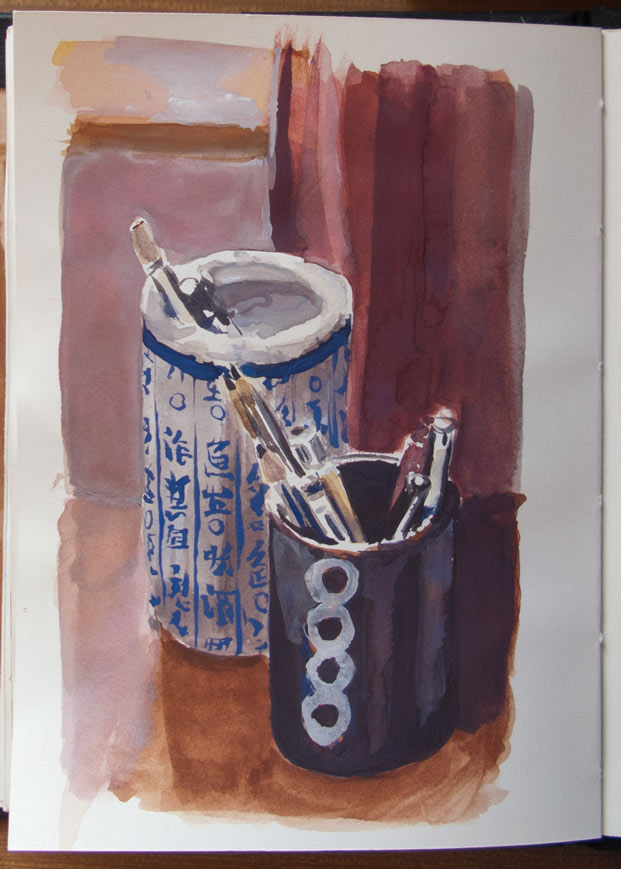
Painted with water soluble oils on paper from a photo taken in the garden. A top tip from Anna Mason’s site is to put a sheet of white card behind the subject when taking the photo. This enables you to assess the composition straight away, and there is no need to do any complicated masking in Photoshop.
The paper is from a 7×5 inch canvas-textured 300gsm acrylic pad (Galeria by Winsor & Newton). I added and extra layer of acrylic gesso with a wide flat house painting brush to further protect the paper from the oils. The texture gives a satisfying resistance to the brush.
Space is a problem where I paint, so by mounting the paper on a board it can be easily propped up on a bookshelf out of the way in between sessions or when waiting for the oils to dry. In this case, the paper was attached to a hardback Tintin book (Explorers on the Moon, since you ask) using masking tape. The masking tape can sometimes rip the surface when removed if pulled off too quickly. I don’t know if this is because I’m using masking tape bought from a DIY shop (is there a low-tack version?) or because the applications of gesso and paint somehow bind the tape to the paper.
The layers of paint on these small sketches are quite thin. In summer it took a few days to be touch dry. I don’t know how long it takes to be fully dry (or should I say ‘cured’), but as I’m not going to be varnishing these, it doesn’t really matter. I’ve read that its best to mount unvarnished paintings behind glass to protect them from dust. Most of my pictures up to now have been drawn in sketch books, but now I need to read up the best way to store these individual paintings.










